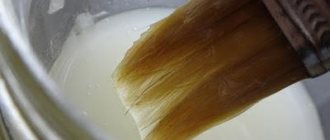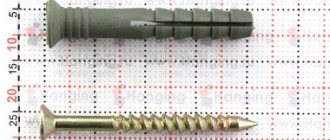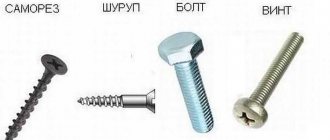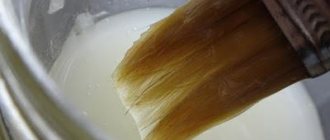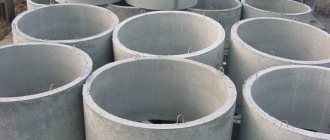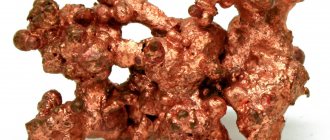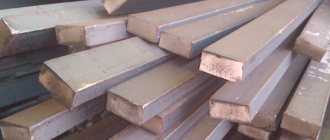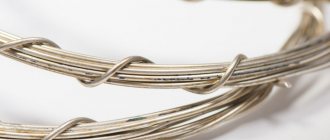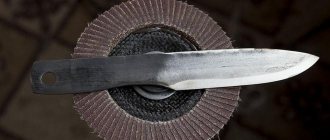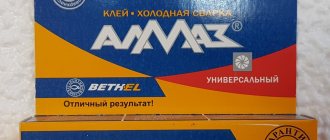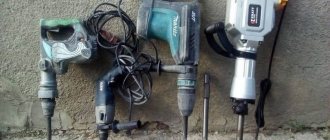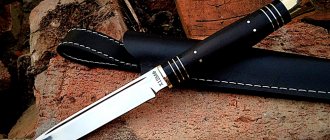In the life of a modern person there are many different rubber products. This material has a lot of advantages - it is elastic, waterproof, and resistant to atmospheric influences. Meanwhile, it is susceptible to deep scratches and cuts. For this reason, rubber adhesive is in great demand among buyers. It is important that the purchased composition has the necessary properties. The buyer must know that he will not let you down at the most crucial moment.
It should be noted that today the construction market offers a fairly extensive range of materials for rubber repair. The main properties of such products directly depend on their purpose, so you should not assume that any rubber adhesive is universal. This is not true. Due to inappropriate use of the adhesive composition, the result of the work may disappoint you - it will be very different from what the manufacturer stated in the instructions. Therefore, rubber adhesive should be chosen very carefully.
Types of glue for rubber
To repair rubber products, it is preferable to use rubber glue rather than universal products. Technologies for the production of special adhesives are developed taking into account the properties of the surfaces to be bonded.
Rubber gluing agents are classified:
- Composition with natural rubber;
- Composition with synthetic rubber.
- Innovative technologies
Natural rubber has lower heat resistance and resistance to external factors, and its scope of application is limited. Therefore, adhesive joints based on synthetic rubbers were developed. They all have common and individual characteristics.
Any good rubber adhesive should have the following properties:
- water resistance;
- strength;
- elasticity;
- resistance to aggressive substances;
- frost resistance and heat resistance.
How to glue acrylic, wood, rubber?
Gluing is a reliable and effective method of strong, durable connection of materials to each other. Adhesives have a high degree of adhesion (adhesion to the surface) and, when hardened, turn into a connecting seam between the two elements to which they are applied. Connecting materials with glue provides:
uniform adhesion between surfaces over the entire plane, as opposed to connecting parts using hardware;
aesthetic appearance of products, due to the absence of technological holes and other signs of fastening on their surface;
The best highly targeted adhesives for a specific type of raw material
In addition to a large number of universal adhesives of different groups (epoxy, polyurethane, cyanoacrylate, polychloroprene, etc.), there are also highly specialized ones that are best suited only for one or several types of materials.
For wood
A wide range of Titebond adhesives for working with wood
- Super PVA moment . It has a high degree of adhesion to all types of wood and raw materials based on it. Transparent after hardening, gives a strong elastic seam, waterproof, quickly sets.
- Moment-Joiner . An excellent alternative to connecting wooden elements using nails or self-tapping screws. Hardens quickly, non-toxic, moisture and heat resistant. After drying it takes on a light wood tone. Shows best results when used in small areas.
- Titebond . High-quality adhesive on a synthetic and polymer base. Used for fastening all types of wood and its derivatives. Suitable for both indoor and outdoor use. Its composition does not contain toxic substances or other impurities harmful to humans, so it can be used for gluing products that come into contact with food.
For rubber
Professional and high-quality adhesive from Henkel, designed specifically for working with rubber products
- Moment Rubber . A waterproof product for gluing rubber products to each other and to other materials. Insensitive to low and high temperatures. Provides a strong and elastic seam that can withstand compression and tension without breaking the seal. Apply to clean, dry surfaces at room temperature. Before connecting them, it is recommended to maintain a time interval (10-15 minutes) and then press one against the other with force. The quality of gluing depends on the pressure force, not the pressing time.
- Glue 88-SA . They perfectly seal rubber products (including those with a spongy surface), filling all the voids at the gluing site. The flexibility of the material is maintained. It is resistant to salt and fresh water and a wide temperature range. Maintains transparency after drying.
- Gummi . Exceptionally waterproof, one-component rubber-based adhesive. Suitable for sealed repairs of water rubber vehicles, car and bicycle tubes, sports balls, etc. After gluing, the seam remains elastic in water and air, even at the maximum degree of stretching or compression.
·For acrylic
ACRIFIX adhesives have proven themselves when working with acrylic
When gluing acrylic surfaces together, you should remember that they must first be evenly heated to relieve mechanical stress on the surface. If this is not done, small cracks will appear at the bonding site.
- ACRIFIX . A small group of one- and two-component adhesives, designed specifically for high-quality gluing of acrylic surfaces. Suitable for filling cracks, fastening slabs and joints. Transparent, with minimal likelihood of bubbles.
- COSMOFEN PMMA . adhesive for reliable bonding of flat and convex acrylic surfaces, including transparent ones. Not exposed to precipitation, high temperatures and ultraviolet radiation. For a long time it does not become cloudy or yellow under the influence of solar radiation. Suitable for working with advertising structures and trade and exhibition furniture made of acrylic.
- 3M SCOTCH-WELD E1100 is one of the best adhesives for working with acrylic and connecting it to other materials. It is resistant to any influences of the external environment, completely fills all gaps and cracks, and does not give a whitish coating at the gluing site. The connections are characterized by high strength, durability and optical transparency.
Types of rubber glue
According to GOST, glue is distinguished according to the amount of dry residue:
- Brand A with a remainder of 8-12%.
- Brand B – 6-8%.
Glue is also classified according to its rubber composition. Due to the fact that the environment has a negative impact on this component, it is not used in its natural form, but is replaced with elastomers. Thanks to them, you can glue different types of surfaces, including plastic, rubber, wood, glass and ceramics. The adhesive joint is resistant to low and high temperatures and aging in the sun.
Based on the rubber composition, the adhesive is divided into:
- The one that contains natural rubber. To ensure vulcanization, sulfur is added here. This composition is used to restore paper, fabric, leather products and old rubber.
- Composition with chloroprene rubber with vulcanizers in the form of divalent metal oxides. This glue glues faster than others.
- A product that uses synthetic (nitrile butadiene) rubber.
- Adhesive with silicone rubber. Ideal for products made of homogeneous rubber.
- A composition with butadiene-styrene type, which according to its characteristics is considered the weakest. It is used for the production of adhesive tape.
Mode of application
When working with glue, you need to remember that it contains a solvent, so you must take all precautions.
- Hot. In this case, the surfaces are glued together in a few minutes at temperatures from 70 to 160 degrees.
- Cold. The procedure is carried out at room temperature, but the effect is achieved after a few days.
The process itself takes place in several stages:
- The surface must be degreased using hydrocarbon solvents.
- The thick composition needs to be diluted. If the glue contains nitrile butadiene rubber, nefras or ethyl acetate can act as a diluent. To prevent the formation of clots, the composition should be heated in a water bath to 45 degrees.
How is the glue applied?
Before gluing, the surface must be degreased and free of dirt. Acetone can be used. It will help not only clean well, but also soften the rubber structure a little (though not for long). It is better to do gluing in several stages.
You definitely need a primer layer that will allow the glue to adhere better. In addition, to improve the quality of work, it is advisable to use technical hair dryers. With their use, the connection warms up (up to a temperature of 60 degrees). Never use open flame sources for this.
To smooth out wrinkles and squeeze out air bubbles, use a heavy, dense roller. It is better to press the joints with some heavy object during gluing.
Glue brands
- Adhesive for rubber or metal 88-CA. Used for cold gluing when working with rubber made from natural rubber. It can be glued to a variety of materials, including wood and concrete. Externally, it is a viscous homogeneous mass from white to gray-green. Precipitation may form. Scope of its application:
- Gluing linoleum onto a concrete or wooden base;
- Shoe repair and gluing of rubber, leather and textile materials;
- Bonding foam rubber or connecting it to other materials, for example, metal, wood or reinforced concrete.
Products using such glue can be used in both fresh and sea water, and can withstand air temperatures from -50 to +60 degrees. The adhesive is heat-resistant, water-resistant and elastic.
- Rubber adhesive – based on gasoline and rubber. It is used for working with rubberized surfaces and fabrics, as well as for gluing metal products.
- Moment-1. It is a toxic and flammable compound, so you need to work with it only with access to air and away from open flame. A broad-spectrum product that is applied to dry, pre-prepared surfaces. After connecting, you need to wait about 20 minutes until it dries completely. Then the two parts being glued are compressed for a couple of seconds.
- Glue 88N. Reliably glues rubber to metal surfaces. If it is dry, you can dilute it with benzene to the consistency of a vein of sour cream. You need to lubricate the rubber with the composition, wait about 5 minutes, apply the second layer to the rubber and the first to the metal. The parts are dried under pressure for 24 hours to achieve the best result.
- Adhesive 4508. Resistant to liquids, ensures elasticity of seams. It is used in factories producing textiles, rubberized fabrics and protective suits. Functional as an adhesive for boats, fishing suits and leather goods.
- LOCTITE 406 is a low-viscosity instant adhesive used for gluing plastic or elastomer-based materials. It can be used for difficult-to-glue plastics.
- Rubber adhesive sealant. A durable composition that is used to ensure high-quality repairs to seals located in windows and doors. Glues materials of porous and non-porous consistency, hardens quickly.
Glue "Moment"
This glue is well known to many Russians. Moreover, if you ask what is the best rubber glue, many will answer that it is “Moment”. This is the most famous and most widespread composition in our country, which has been in constant demand for many years. Using this glue you can join almost any materials.
Rubber adhesive "Moment" is intended for gluing foam and hard rubber. In addition, it reliably connects rubber with other materials: rigid PVC, concrete, wood, cardboard, metal. The product provides very high strength, reliability, elasticity, water resistance and durability of the adhesive joint.
It is suitable for any home renovation. However, it is necessary to mention the (only) drawback - the glue dries quickly, so the tube can be considered disposable. If you don't use it completely, the remainder will certainly dry out. A 125 ml tube will cost approximately 102 rubles.
Adhesive for rubber boats
Repairing rubber boats is a complex process that requires certain skills to carry out. The most popular in this area is glue 4508, which is based on natural rubber. It provides elastic joints and good stickiness.
“Radical” is also in demand in this area. It can withstand high temperatures, high loads and salt water. The composition includes a solution of rubbers and a mixture of several solvents.
When choosing “Moment” for working with rubber boats, you need to remember that it is sensitive to high temperatures and dries instantly under the sun. Therefore, it will not work in this case, since the boat will fall apart or come apart.
The following compounds are priority in boat repair:
- "Rogneda".
- "Super-NN" in combination with "Izur-021".
- GRIFFON UNI-100 or Tangit PVC-U, which works on the principle of cold welding.
- Loctite Super Fast sets quickly, making it suitable for repairing boats in field conditions. The disadvantage of using it is that the speed of drying is accompanied by uneven distribution over the entire area.
- "Moment-gel" and "Moment-crystal".
Polyurethane glue
Polyurethane adhesive is a one-component composition that does not contain solvents and hardens in a humid environment. Used for laying elastic layers with rubber crumbs. Area of use: gluing rubber sports mats. The main characteristics are high elasticity, wide adhesion spectrum and rapid hardening.
For crumb rubber
Modern crumb rubber coatings, which are made using seamless technology or assembled from tiles, paving stones, as well as crushed rubber sheets, have proven themselves to be durable and reliable options for forming the top layer on sports and children's playgrounds and paths.
The reliability and quality of such a coating are determined not only by the properties of the rubber itself, but also by the quality of the binding materials that are used in the manufacture of tiles, paving stones or mats, as well as their laying on the surface. Adhesive for rubber coating can be of two types:
- rubber-bitumen mastic;
- polyurethane glue.
The last option is a homogeneous liquid composition. It can be colorless or with a whitish tint. Such products have different degrees of viscosity. Polyurethane adhesive for crumb rubber is produced in two modifications: one-component and two-component.
Recommendations for choosing adhesive
- Do not give preference to untested cheap compounds, because they can harm the rubber.
- Between special and universal, you need to choose the first option.
- The higher the stickiness of the glue, the less durable it is.
- The higher the heat resistance, the better the product.
Almost all rubber adhesives are universal in use, however, there are restrictions on environmental conditions. You should definitely look at such indicators on the packaging before purchasing the product.
GOST guards quality
Today, glue production is carried out in factories using high-precision equipment. The product contains complex inorganic and organic elements. They are processed using modern technologies, which allows us to obtain high-quality rubber adhesive. GOST 2199-78 provides and registers technical characteristics, composition, as well as product safety standards.
In addition, it establishes normative ranges for important parameters and values that all manufacturers operating in Russia must comply with. Products that do not meet at least one standard are not allowed for official sale. Therefore, do not hesitate to ask the seller for permission to conduct trading activities and a quality certificate.
BONDING RUBBER WITH OTHER MATERIALS
BONDING RUBBER WITH OTHER MATERIALS
For gluing rubber to rubber, “Rubber Glue” is used, and for gluing rubber with other materials, such as: rubber adhesives “88N”, “88NP”, “Patex”, “KR-1”. They can also be used for gluing rubber. When gluing rubber, the surfaces are first cleaned of dirt with some cleaning solution and dried. The areas that need to be glued are cleaned and then degreased with gasoline. A layer of rubber glue is applied to the prepared surfaces and allowed to dry, after which a second layer is applied and allowed to dry until tack-free. Then the surfaces are connected and the seam is left for 2-3 hours under light load. Final drying lasts 12 hours. The recommendations presented by the author are taken from the book by A. M. Yudin and V. N. Suchkov “Chemistry in Everyday Life” (M., Khimiya, 1971).
Rubber adhesive and characteristics
Adhesive for rubber coatings began to be invented in the first half of the 19th century, immediately after the appearance of corresponding products on the European markets.
But at first, all attempts ended in nothing; it was possible to dissolve the rubber in laboratories, but it was no longer possible to give it the properties of an elastomer after drying. After numerous experiments, it was found that the best glue for rubber is made from rubber, and its composition necessarily contains:
- Crosslinking agent;
- Vulcanizing additive;
- Solvent.
This is the minimum that allows you to produce glue for gluing rubber to rubber. But elastic adhesive was in demand by industry, and additional additives began to be included in the classic composition to improve the performance characteristics of the finished joint.
Similar chapters from other books
HOW TO USE CREAM, MASK AND OTHER COSMETIC PRODUCTS CORRECTLY
HOW TO USE CREAM, MASK AND OTHER COSMETIC PRODUCTS CORRECTLY To get the maximum effect from the cream, you must follow certain rules for its application. Any cream is applied after cleansing the skin. It’s even better if it’s not just cleansing, but
Safety precautions when working with paints and varnishes
Safety precautions when working with paints and varnishes When carrying out painting work, the following types of risks and dangers are possible: the danger of poisoning and the danger of fire or explosion. Fire hazards can be eliminated or reduced by following
GLINDING WOOD
GLUEING WOOD To repair furniture in various carpentry works, the following adhesives are used: “PVA”, “PVA-A”, “PVA-M”, as well as “Oak”, “Synthetic carpentry”, “Casein glue” (in powder) and “Glue bone" (in tiles). Durable and waterproof seams are provided by “Casein glue”,
BONDING METALS WITH OTHER MATERIALS
BONDING METALS WITH OTHER MATERIALS Probably not every car enthusiast knows that you can, for example, repair cracks in the head and cylinder of motorcycle and car engines, glue a fitting, glue a bracket, or repair a crack in a tank. But here too
GLASS BONDING WITH OTHER MATERIALS
GLUING GLASS WITH OTHER MATERIALS When gluing glass and gluing various materials to it, the most durable and colorless seams that are resistant to cold water are “Mars”, “Patex”, “Unicum”, “PVA”, “Super Cement” and “BF-” are also suitable 2".Before gluing
BONDING LEATHER WITH OTHER MATERIALS
BONDING LEATHER WITH OTHER MATERIALS For gluing leather to leather, leather to fabric and leather to leather substitutes, the following adhesives are most suitable: “Mars”, “MC-1”, “AGO”, “EGA”, “Rapid”, “88N”, “ KR-1", "PVC", "PVA", "Patex" and "Unicum". Most often, the skin has to be glued together in those
GLINDING WOOD
GLUING OF WOOD Bone, hide and casein glue are used for gluing parts. Bone and hide glue is produced in the form of tiles or cereals, as well as in liquid form. It is consumed only hot, so it is first steamed in a saucepan consisting of
4.8. Coatings of concrete floors with reinforcement of the top layer with polymer materials
4.8. Coatings of concrete floors with strengthening of the top layer with polymer materials To strengthen the top layers of concrete floors, in addition to dry toppings, liquid toppings are also used. Floors reinforced with dry toppings do not have high chemical resistance and cannot withstand
4.9. Coatings of concrete floors with reinforcement of the top layer with polymer-cement materials
4.9. Coatings of concrete floors with strengthening of the top layer with polymer-cement materials Some features of technological processes and operating conditions of floors in meat, fish, dairy, canning, and bakery processing plants limit
I. BONDING
I. GLINDING In amateur radio practice, there often arises the need to glue a wide variety of objects: paper, cardboard, leather, fabric, metal, ceramics, wood, plastic, glass, etc. Wood glue and casein glue are most suitable for gluing, but
Gluing chairs
1.19.3. Bonding and veneering
Gluing and sticking
Gluing and gluing Gluing is the joining of wooden parts using glue (Fig. 19). Wood glue should be transparent or at least light, so that it does not highlight the gluing area, does not stain the wood, and excess can be easily removed
Wood gluing
6. Wood gluing Basic requirements for the gluing process. In carpentry, the ability of wood to bond well with various adhesives is widely used. At the same time, the strength of the parts increases, warping decreases, and the wood receives a margin of safety
